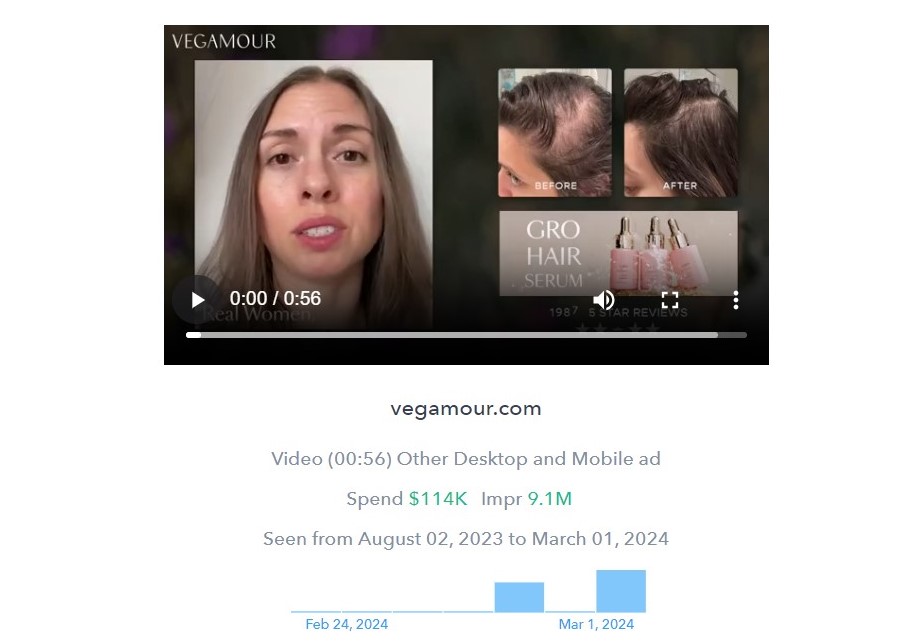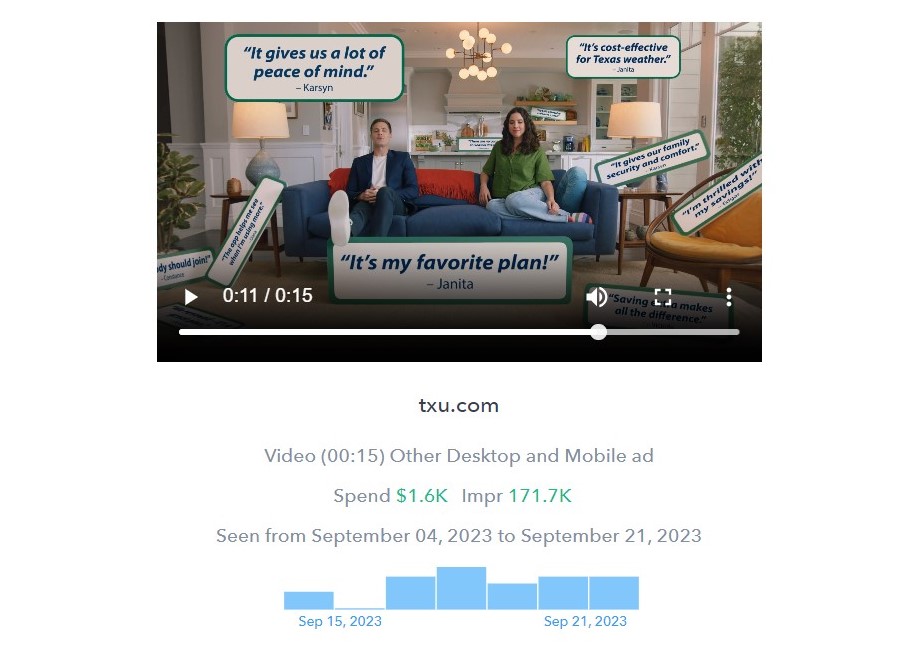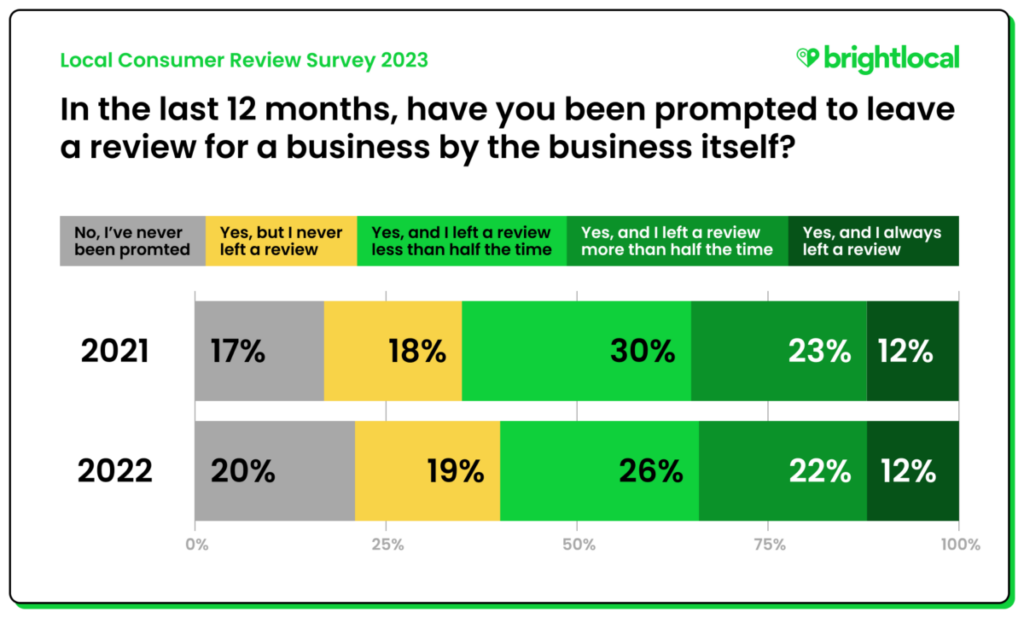Here’s a thought exercise. How many times have recommendations from other people driven your purchase decisions? And how many times have you bought something online without checking the reviews first?
As for me, I have done that a sum total of zero times. That’s right. I never buy anything without reading the reviews first. And I’m not alone in this. 9 out of 10 customers read reviews before they buy something online.
This is the power of social proof. It helps brands build credibility and trust among potential customers. And testimonial advertisements are one of the best ways of establishing social proof.
What are testimonial advertisements?
Before we talk about testimonial ads, let’s first define what a testimonial is. Testimonials are statements from previous customers detailing their experiences using a brand’s product or service and how it benefited them. They are essentially positive customer reviews meant to act as recommendations for any potential future customers.
Testimonial ads are simply testimonials or reviews from previous customers repurposed into ads and shared on various channels such as search engines, social media, newsletters, or landing pages.
Types of testimonial advertisements
When you think of a testimonial, you probably picture a text review on websites like Amazon or TrustPilot. But that’s only one type of testimonial. Testimonials come in various shapes and forms, which means so do testimonial ads.
Written quotes
Quote testimonial ads refer to written reviews from customers presented in the form of quotes – often with their name and photo or social media handle attached. These are often short and concise, and speak on how your products/ services addressed the customer’s pain points.
Here’s an example of a quote from a customer that was turned into an excellent testimonial ad along with the number of impressions it received:

Video testimonials
Video testimonial ads usually consist of customers sitting down and sharing the positive experiences they had with your brand, often with storytelling elements involved. However, they could also be in the form of product demonstrations by customers.
Here’s an example of a video testimonial ad that features real customers talking about how the product has changed their lives:

Influencer recommendations
Influencer testimonial ads refer to endorsements given by an influencer who has used your product or service. Niche influencers often have a loyal fanbase who trust them. So, when influencers recommend a product/ service? Their followers listen. Influencer testimonial ads could be a simple quote from an influencer, a video of them using your product in their everyday life and casually mentioning it, or a full product demonstration with the benefits highlighted.
Or, instead of working with established influencers, you can turn your customers into influencers by encouraging them to share user-generated content (UGC). This could be something like sharing a photo of them using your product or a video that shows how your product made their life easier. You can now pick the best from these and turn them into testimonial ads.
Here’s an example of a testimonial ad that features a customer visually demonstrating the different stylish looks you can achieve with the brand’s eyeglasses. The video looks to be an example of user generated content, wherein the customer itself turns into an influencer.

Expert endorsements
Expert endorsements or opinions are similar to your average testimonial ads – except they come from experts in your field. These endorsements could be in the form of quotes or videos.
Expert testimonial ads are highly effective because of their reputation and credibility. And if you have ever bought a skincare product because it was recommended by a dermatologist, or a phone endorsed by a tech expert, you know exactly what I’m talking about!
Why do testimonial advertisements resonate so well with customers?
Should you use testimonial ads as part of your advertising strategy? That’s a big, fat YES. And here’s why.
1. They act as social proof
People trust other people more than they will ever trust any brand. And while personal recommendations from friends and family still reign supreme, online reviews and testimonials aren’t far behind. In fact, as many as 1 in 2 customers trust online reviews as much as personal recommendations.
And when in doubt about a product or service? People typically look to their peers to see which brand they chose, and whether they had a positive experience. If yes, they’re more likely to try out that brand — because, hey, someone’s already been there, done that, and liked it. This is exactly what social proof is- a stamp of approval from previous customers.
So, when people read (or watch) testimonial ads, they’re essentially listening to previous customers talk about their positive experiences with your brand. This speaks about the usability of your product/ service, gives you credibility, and fosters a sense of trust among potential customers, allowing them to choose you.
Like this one, for example:

2. They highlight how your product/ service makes customers’ lives easier
Why do people buy things? To solve a problem or take care of a need. For instance, people buy water bottles because they have a need: carrying water around in a portable container. And water bottles address this need in a convenient way.
Since reviews often talk about how your product/ service made a customer’s life better by addressing a need they were having, testimonial ads are very effective in highlighting what you can do for your customers. And the fact that this is coming straight from a customer’s mouth only adds to your brand’s credibility.
Here’s how Hims features customer testimonials on their landing page along with before/ after photos:

3. They show that you’re genuine
Gen Z and millennial customers crave authenticity from brands–even when it comes to advertising. And what’s more authentic than a testimonial?
However, to avoid suspicions of fake reviews, always make sure to include the customer’s name, their location (optional), and a photo. If you’re sourcing reviews from social media or sites like Yelp, create a testimonial ad using the original screenshot of the review.
4. They don’t burn a hole in your wallet
Let’s face it. Advertising can really eat up your cost. You need to pay for a designer, copywriter, photographer, editor, model.. you get my point.
But testimonial ads? They need none of this (well, mostly), which makes them very cost-effective.
5. They make your sales numbers go up
All the other benefits discussed above ultimately lead to this- an increase in sales. By instilling trust in people and reducing their decision-making anxiety by highlighting the benefits of your products/ services, testimonial ads enhance brand visibility and increase sales.
According to research, displaying testimonials can lead to an increase in conversions by 190% for lower-prices products. For higher-priced products, the conversion rates can go up by as much as 380%!
How to gather testimonials from previous customers
The first step to creating any testimonial ad is to actually gather the testimonials. Use these tips to get more testimonials from previous customers.
Ask for reviews from existing customers
The best way to get something is simply to ask for it. Reach out directly to your customers, either after a purchase or after the service/ product has been delivered. i.e. when your brand is still top of mind You’ll find that most customers are willing to leave a review.
A survey conducted by BrightLocal revealed that more than half of the customers leave a review when prompted by the business to do so.

The same survey also highlighted how customers prefer to receive these review requests- through email, during the sales, on an invoice, and through social media.
However, generic reviews like “so good” or “loved it!” aren’t going to be much help for you in creating testimonial ads. So, instead of just requesting a review, try asking specific questions. Some examples are:
- How has this product/ service made your life better?
- Which of your problems did this product/ service solve?
- How much time has this product/ service saved you everyday?
- Would you recommend this to your friends and family? If yes, why?
This way, you’ll get specific answers that highlight your benefits.
Leverage third-party review sites
There are several third-party sites, like TrustPilot, Capterra, and Yelp, created specifically for people to review businesses. If you also sell on marketplaces like Amazon, you’ll probably find reviews by customers there. Additionally, if you monitor social media channels to see what people think about your brand, you’re likely to stumble onto comments or social media posts raving about your products/ services.
Instead of reaching out to customers directly, you can pull testimonials off of these websites and repurpose the screenshots into simple display ads. Such as the one below:

The above ad performed quite well, receiving more than 3M impressions!

Alternatively, some brands simply like to mention their average star rating from third-party review sites. Check out the example below:

Tips for creating effective testimonial advertisements
Now that we have covered the what and the why of testimonial ads, it’s time for the how. How can you make sure that your testimonial ads really stand out? Here are some tips.
- Keep it real. People love authenticity from brands. But they are also wary of fake reviews and testimonials that seem “too good to be true.” In fact, research shows that potential customers tend to be skeptical of brands that only have 5 star reviews. So, to keep it real, include a mix of 5 star and 4 star reviews. And, most importantly, don’t edit out the negative parts of a testimonial. It’s impossible for everyone to love everything about your brand, and customers know this. So, keep your testimonial ads real.
- Include personal details. Anonymous testimonials are not trustworthy and often seem fake. People trust testimonials that have personal details like name, location, or social media handle attached because they speak of authenticity and are easy to verify. So, include details like a photo of the customer, their name, or social media handle. In short: give those testimonials a face. But make sure you get their permission before you do!
- Highlight unique selling points. What can your brand do for customers? How is your product/ service going to help them? Pick testimonials that answer these questions. This helps potential customers see themselves benefitting from your brand and increases conversions.
Take the below testimonial ad for instance. Talking about money is often considered taboo, so seeking financial advice is something that a lot of people struggle with. Vanguard, an investment advisor, has reassured any potential customers by highlighting a testimonial that specifically addresses this issue:

- Incorporate visuals. Images and videos help potential customers understand how your product/ service works. You can attach a video or photo alongside a quote testimonial or ask consumers to shoot a video testimonial for you in exchange for some kind of incentive (example: exclusive discounts, free gifts with their next order etc.).
- Tell a story. Go one step further and include storytelling elements in your testimonial ads to help them resonate with people and forge an emotional connection with your brand. As a bonus, you can include how your products/ services align with your brand values as well. Let’s say you sell green pencils that can be planted once they’re used. Here, it would be a good idea for you to use a testimonial from a customer who believes in sustainability and talks about how your pencil has allowed them to reduce their carbon footprint and also plant trees.
Finally, don’t be shy to use those testimonial ads everywhere. We’re talking emails, newsletters, landing pages, underneath product descriptions, social media.. pretty much everywhere you have a presence.
Take charge of your advertising strategy with Adbeat
At Adbeat, we turn raw advertising data into easy-to-understand insights- all so that you can see your competitors’ advertising strategy and use this data to create better display ad campaigns.
Get ready to knock your advertising out of the park with Adbeat. Sign up now!